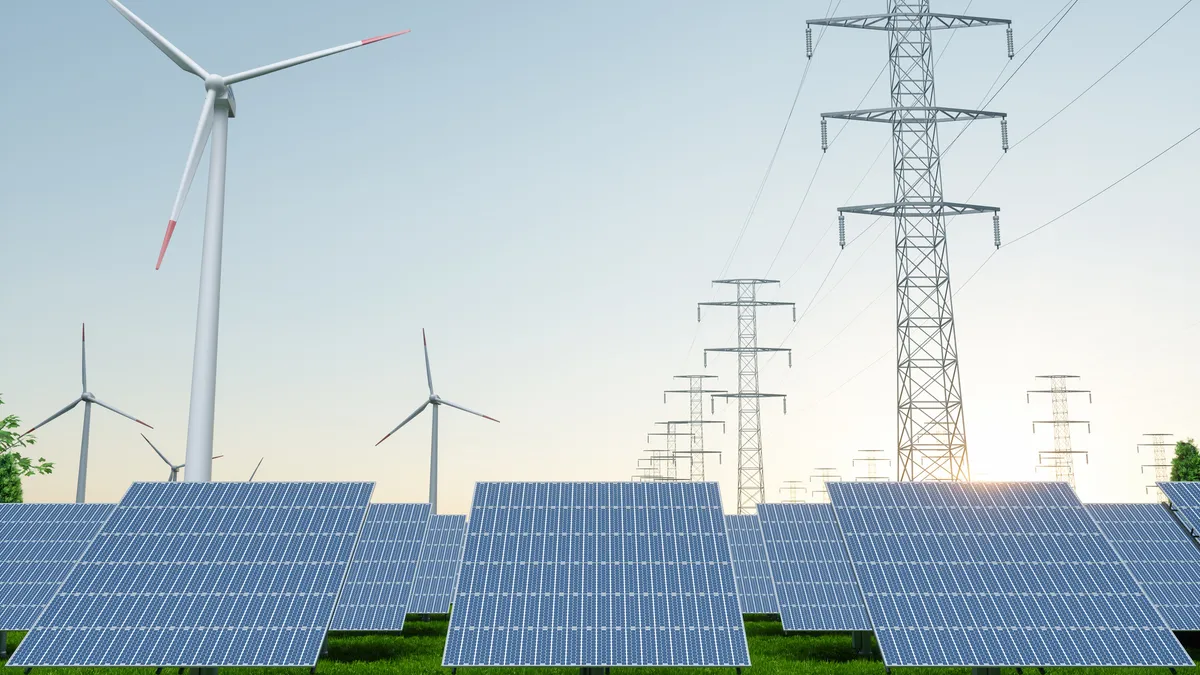Dive Brief:
-
LevelTen Energy, which operates an asset marketplace for buying and selling renewable energy projects, has seen a decline in both the size and number of bids on their platform in recent months, according to an August report.
-
Demand for later-stage projects remains strong, but earlier and more speculative projects that have not yet secured interconnection approvals have seen limited interest from buyers, according to Patrick Worrall, vice president for the asset marketplace.
-
Renewable energy markets are still constrained by lengthy interconnection queues around the country, and a capital shortfall could eventually prevent the industry from achieving ambitions driven by the Inflation Reduction Act, Worrall said.
Dive Insight:
Sales of renewable energy assets cooled during the first half of 2023, reflecting both the rising cost of capital and the growing maturity of the renewable energy industry, according to LevelTen Energy.
The last two years, Worrall said, have been something of a sellers market for renewable energy, with investors looking to acquire pretty much any project they could get their money into. Well-developed projects continue to attract strong prices, he said, but in recent months, investors have become a bit more choosy. Projects with siting concerns or that lack a clear path to interconnection are seeing few, if any, bids from prospective buyers, he said.
At the same time, larger developers who until the recent past were buying any sort of renewable project they came across — whether it be community solar or utility-scale storage — have begun to winnow down their portfolios to pursue more focused business strategies, Worrall said. It's not so much that one resource has proven more popular than the others, he said, but the industry is doing a bit of reshuffling as the largest developers determine which industry segments they find most appealing. The emerging strategies, Worrall said, tend to focus on acquiring projects with similar revenue models, with some developers pursuing utility-scale projects while others focus on distributed generation, for example.
“Large development pipelines built over the last few years are in need of rationalization, and paring back non-core, overly challenging or speculative projects will provide focus for large developers,” the report said.
All this has led to a more balanced, less frenetic market for renewable energy, according to the report from LevelTen Energy. Interconnection remains a significant bottleneck preventing newer projects from entering the market, but the other side of the equation — capital — could one day become the limiting factor, Worrall said.
It's not just that rising interest rates have made for more expensive capital and more cautious investors, he said. It's also unclear where the explosive growth in renewable energy investment from the IRA is going to come from. Between new tax credits created by the IRA, expansions and extensions of existing tax credits, and new investment options like tax credit transferability, the law is expected to grow the supply of tax credits available to investors to $40 billion to $60 billion per year. But for the last several years, demand from financiers for tax credit deals has hovered around $20 billion annually. And unless new tax credit buyers enter the marketplace, Worrall said, it's not clear where that additional financing is going to come from.
Without more upfront financing, project development is not likely to accelerate under the IRA the way people envision, Worrall said. With so many new tax credits in play, he said, it might actually serve to take the same pot of funds and distribute it across a wider variety of projects — not just solar and wind installations but also manufacturing and hydrogen production.
“Right now the long pole on the tent is interconnection,” Worrall said. “But very quickly the long pole could be, I have all my permits, I have my PPA, but I can't get investment because I can't sell my tax credits.”













